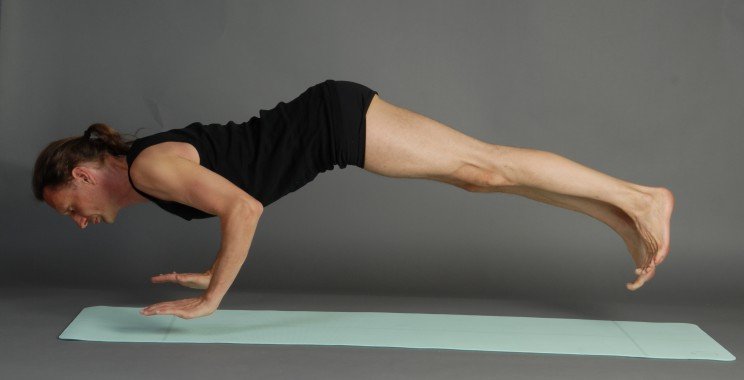Nakrasana is a dynamic and energetic asana that resembles the movements of a crocodile. It can be seen as a continuation of Chaturanga Dandasana, which is why it has a similar technique. “Nakra” means crocodile in Sanskrit.
Technique:
The first three positions are the same as in Chaturanga Dandasana:
- Lie face down on the floor, arms extended along the body, palms down, take a few breaths.
- While inhaling, pull your arms up so that they are at shoulder level. The palms lie completely on the floor, the fingers are pressed to each other, extended forward.
- As you exhale, lift the body, balancing on the hands and toes, looking down. Line: The outer side of the forearms, buttocks, legs should form a straight line. All muscles are tense: abdominals, buttocks, front and back of the legs. Remain in the asana for as long as the preparation allows. It is recommended to start with 10 seconds. Breathing is even.
- Spread the feet approximately 30-40 cm, while exhaling, push off the floor at the same time with the hands and feet, while the body line of the body should remain straight. Make a few “jumps” up. After each “jump,” take several respiratory cycles.
- Make several “jumps” forward and backward alternately.
- Then return to the starting position and relax.
Nakrasana is recommended for the general restoration of the body’s strength since it increases blood circulation, including cerebral circulation. This asana helps relieve physical and emotional fatigue and compensates for psychological stress. As with Chaturanga Dandasana, it also helps to strengthen the abdominal muscles.
Note: Asana should not be performed during periods of exacerbation of any chronic diseases. Even if you decide to do yoga on your own, you need to work with a yoga instructor in the initial stages and consult a doctor.



